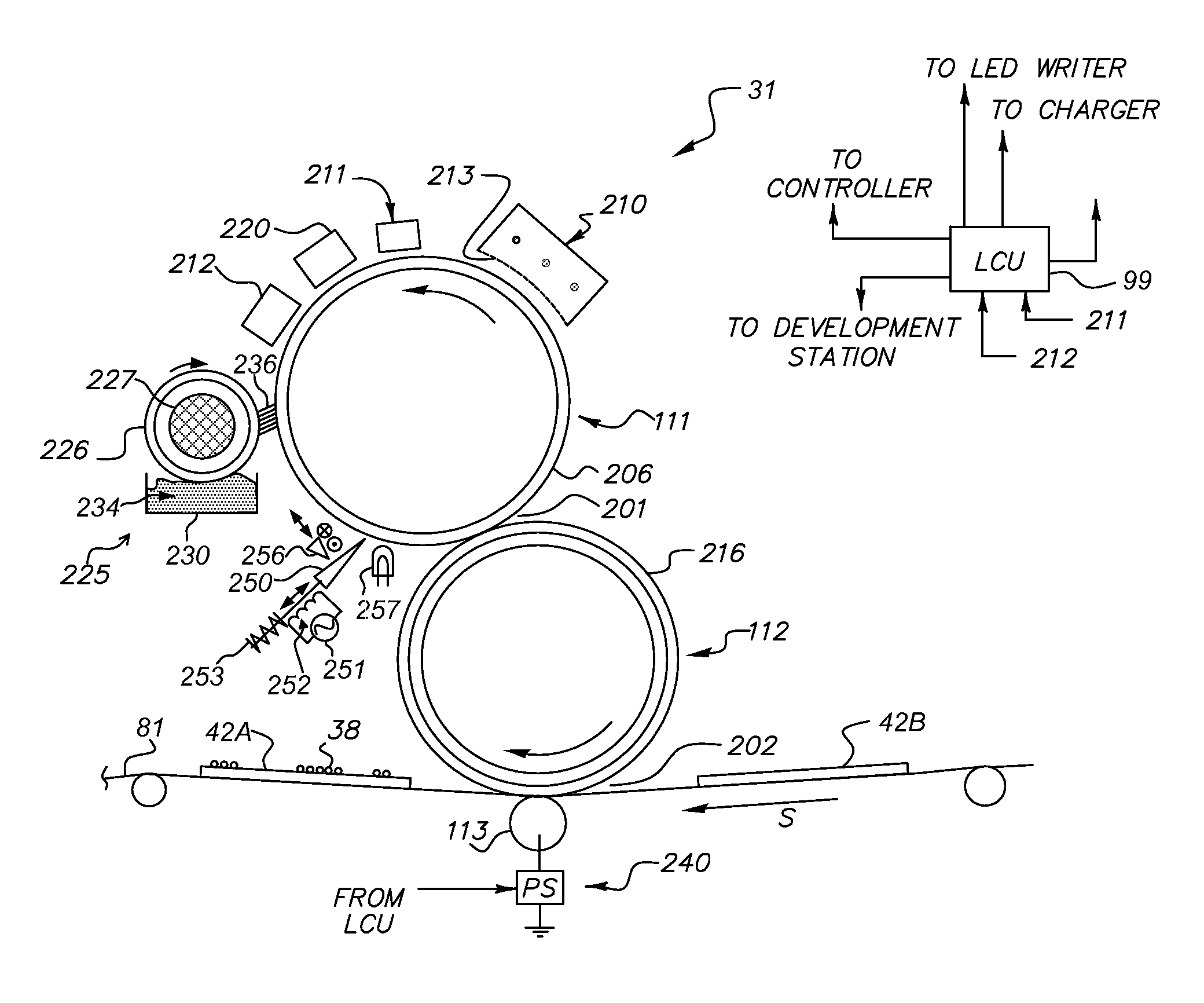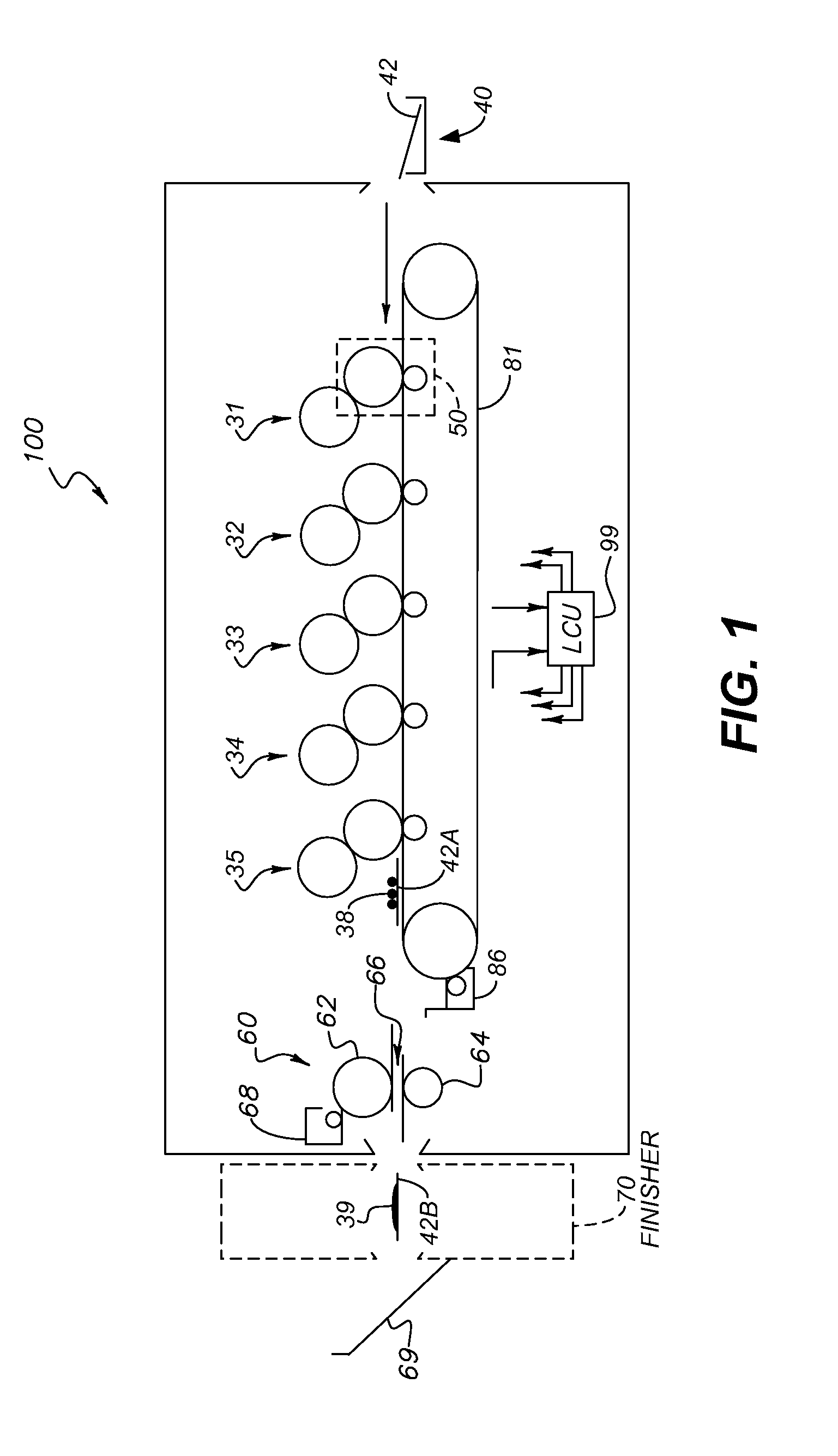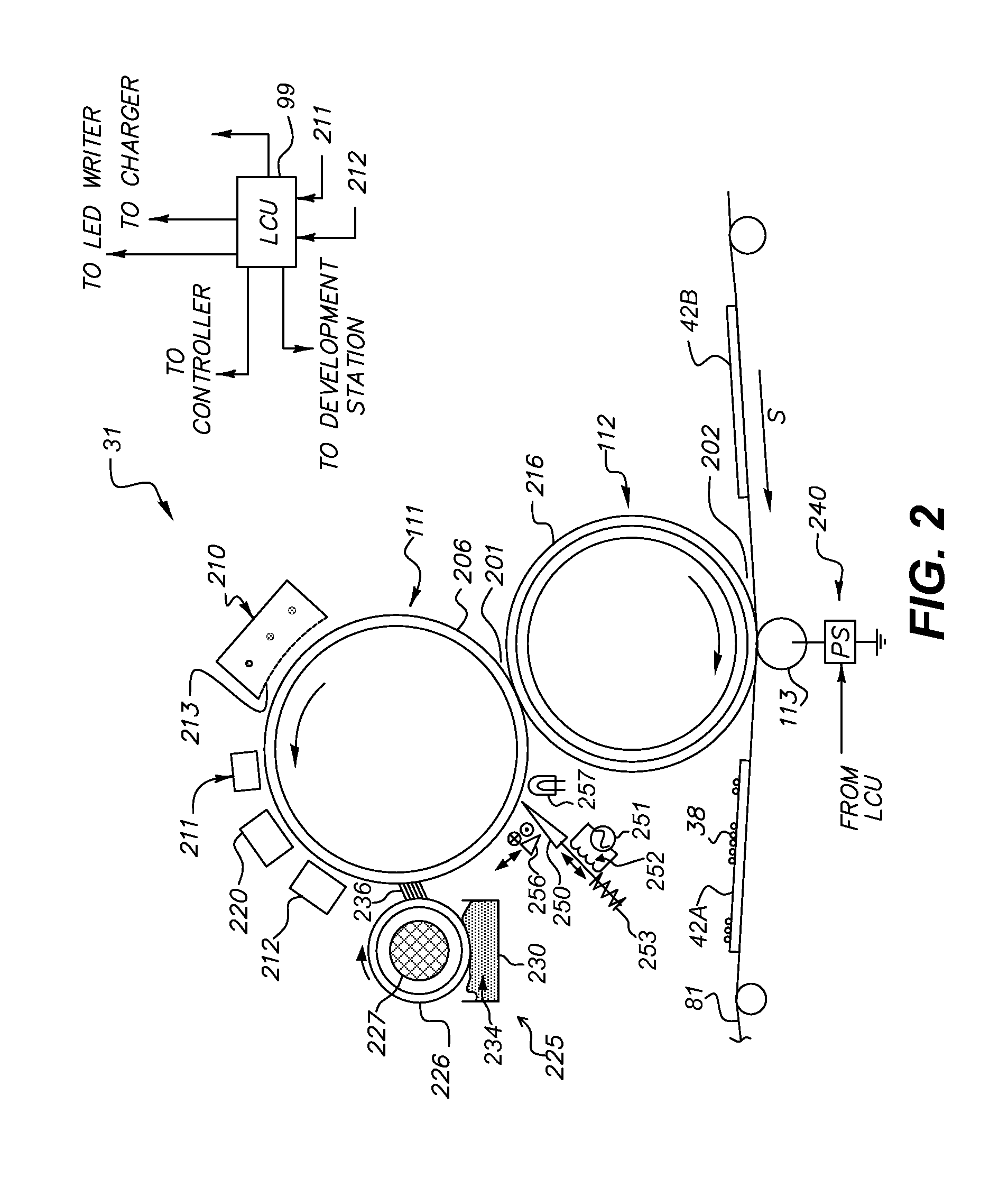Removing electrophotographic carrier particles from photoreceptor
a carrier particle and photoreceptor technology, applied in the field of electrophotographic printing, can solve the problems of physical damage to the photoreceptor and image artifacts, and achieve the effects of reducing the chance of damage to the latent image, and reducing the probability of cleaning off the carrier
- Summary
- Abstract
- Description
- Claims
- Application Information
AI Technical Summary
Benefits of technology
Problems solved by technology
Method used
Image
Examples
Embodiment Construction
[0022]As used herein, “toner particles” are particles of one or more material(s) that are transferred by an EP printer to a receiver to produce a desired effect or structure (e.g. a print image, texture, pattern, or coating) on the receiver. Toner particles can be ground from larger solids, or chemically prepared (e.g. precipitated from a solution of a pigment and a dispersant using an organic solvent), as is known in the art. Toner particles can have a range of diameters, e.g. less than 8 μm, on the order of 10-15 μm, up to approximately 30 μm, or larger (“diameter” refers to the volume-weighted median diameter, as determined by a device such as a Coulter Multisizer).
[0023]“Toner” refers to a material or mixture that contains toner particles, and that can form an image, pattern, or coating when deposited on an imaging member including a photoreceptor, a photoconductor, or an electrostatically-charged or magnetic surface. Toner can be transferred from the imaging member to a receive...
PUM
 Login to View More
Login to View More Abstract
Description
Claims
Application Information
 Login to View More
Login to View More - R&D
- Intellectual Property
- Life Sciences
- Materials
- Tech Scout
- Unparalleled Data Quality
- Higher Quality Content
- 60% Fewer Hallucinations
Browse by: Latest US Patents, China's latest patents, Technical Efficacy Thesaurus, Application Domain, Technology Topic, Popular Technical Reports.
© 2025 PatSnap. All rights reserved.Legal|Privacy policy|Modern Slavery Act Transparency Statement|Sitemap|About US| Contact US: help@patsnap.com



